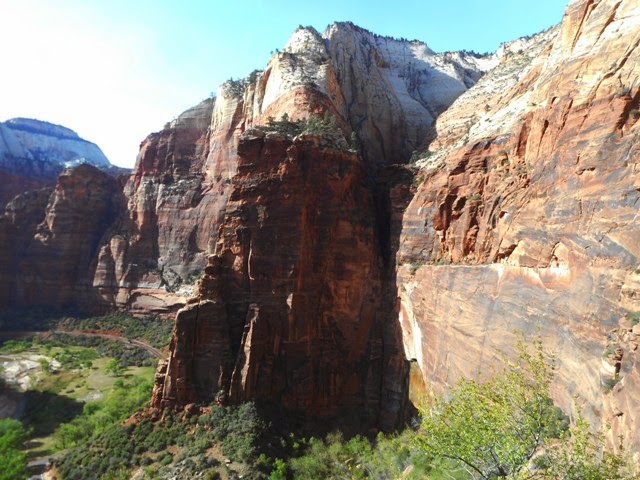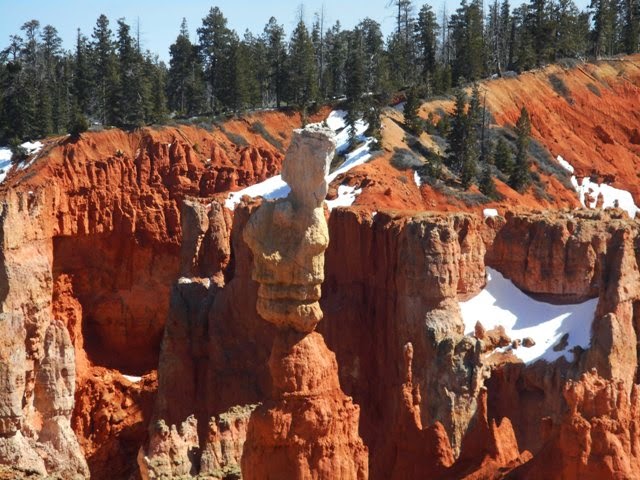Well, we finally made it to the big canyon that was carved by the Colorado River. It was beautiful, and truly a must see. However, as parks go, the Grand Canyon lacked the diversity that we've seen in many parks. The view is spectacular and again, a must see at least once! We hiked the South Kaibab trail to just past Skeleton Point. It made for a nine mile round trip, with a 2000 foot elevation change. There were very good views of the river.
 |
| Sunset in Grand Canyon. |
 |
| Sunset in Grand Canyon. |
 |
| The Grand Canyon from the South Rim. |
 |
| Another view of the Grand Canyon. |
 |
| Another view |
 |
| And yet another view. |
 |
| Hiking the Kaibab trail. |
 |
| There were some steep parts. |
 |
| View in the middle of the canyon. |
 |
| Heading back up. |
 |
| I was wishing I had one of these on the way back up. |
A short drive past Flagstaff took us to a small monument called. Sunset Crater Volcano. The cinder cone volcano erupted most recently between 1040 and 1100, and has left an impressive 1000 foot cone, as well as cinder dunes. The San Francisco volcanic field that engulfs the area, includes more than 600 hills and mountains. In this area you can see a cinder cone volcano, a stratovolcano, and a shield volcano.
 |
| Sunset Crater Volcano and a lava flow. |
 |
| A composite volcano. |
 |
| Sunset Crater, a cinder cone volcano. |
 |
| San Francisco Peaks, a stratovolcano. |
 |
| Lava flow |
Next to Sunset Crater Volcano National Monument is the Wupatki National Monument. During the 1100's the Pueblo people farmed, traded, and created communities in the volcano fields. They built masonry dwellings using sandstone, limestone, and basalt, held together with a clay mortar. The buildings included multi-level, multi-room structures that housed entire communities.
 |
| The Wupatki Pueblo. It had about 100 rooms originally. |
 |
| Wupatki Pueblo |
 |
| Another view of Wupatki |
 |
| The Wukoki Pueblo. It was the tallest pueblo. |
 |
| These are pueblos build in a box canyon. |





























































